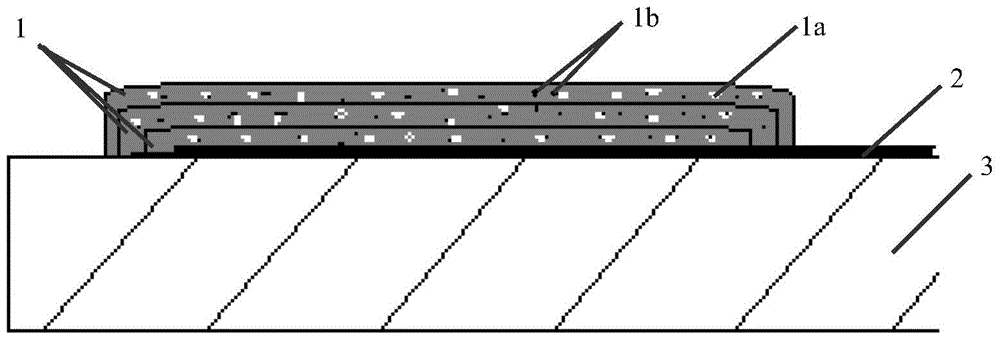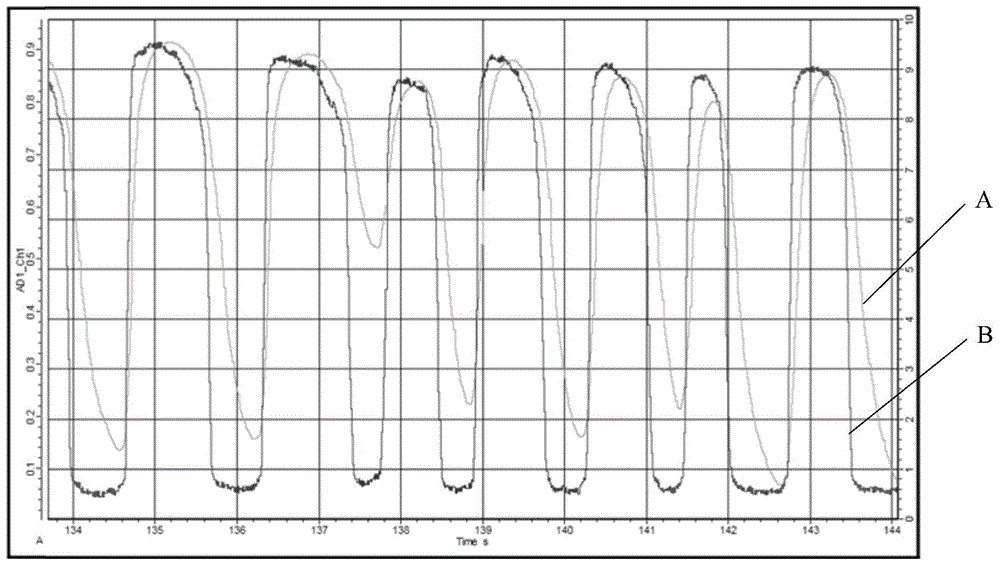A kind of vehicle vehicle exhaust gas sensor outer electrode protective layer and preparation method
A technology for automobile exhaust and protective layer, which is applied in the direction of instruments, scientific instruments, material electrochemical variables, etc., can solve the problems of not getting exhaust pipes, unstable idling of the engine, easy to fall off, etc., to improve the response rate and avoid lag Influence, the effect of simple process flow
- Summary
- Abstract
- Description
- Claims
- Application Information
AI Technical Summary
Problems solved by technology
Method used
Image
Examples
Embodiment 1
[0038] 1. Prepare the organic vehicle: add the binder into the solvent in a certain amount, then place it in a magnetic stirrer, set the temperature at 80°C, and the magnetron speed at 200-400r / min, until the binder is fully dissolved in the After being put into the solvent, add plasticizer, leveling agent, thixotropic agent and dispersant in proportion to configure 25g of organic vehicle. The components in the organic vehicle phase and the mass percentage of each component are shown in Table 1.
[0039] 2. Disperse 70g of yttrium-doped zirconia ceramic powder and 3.5g of chloroplatinic acid with absolute ethanol to make a premix, mix the premix evenly by ball milling, and then place it in an oven at 80°C drying.
[0040] 3. Place the dried powder in a resistance furnace for calcination at 900°C for 2 hours, and then grind the calcined powder with a mortar.
[0041] 4. Mix the ground powder in step 3, 1.5g ultrafine carbon powder and the above-mentioned 25g organic carrier, a...
Embodiment 2
[0044] 1. Prepare the organic vehicle: add the binder into the solvent in a certain amount, then place it in a magnetic stirrer, set the temperature at 80°C, and the magnetron speed at 200-400r / min, until the binder is fully dissolved in the After being put into the solvent, add plasticizer, leveling agent, thixotropic agent and dispersant in proportion to configure 25g of organic vehicle. The components in the organic vehicle phase and the mass percentage of each component are shown in Table 1.
[0045] 2. Disperse 60g of yttrium-doped zirconia ceramic powder with a particle size of 0.5u, 14.5g of yttrium-doped zirconia ceramic powder with a particle size of 1.5u and 0.5g of chloroplatinic acid with absolute ethanol to prepare For the premix, use ball milling to mix the premix evenly, and then dry it in an oven at 80°C.
[0046] 3. Place the dried powder in a resistance furnace for calcination at 900°C for 2 hours, and then grind the calcined powder with a mortar.
[0047] 4. ...
Embodiment 3
[0050] 1. Prepare the organic vehicle: add the binder into the solvent in a certain amount, then place it in a magnetic stirrer, set the temperature at 80°C, and the magnetron speed at 200-400r / min, until the binder is fully dissolved in the After being put into the solvent, add plasticizer, leveling agent, thixotropic agent and dispersant in proportion to configure 25g of organic vehicle. The components in the organic vehicle phase and the mass percentage of each component are shown in Table 1.
[0051] 2. Disperse 70g of yttrium-doped zirconia ceramic powder and 0.5g of rhodium trichloride hydrate with anhydrous ethanol to prepare a premixed solution, mix the premixed solution evenly by ball milling, and then place it at 80°C Dry in oven.
[0052] 3. Place the dried powder in a resistance furnace for calcination at 900°C for 2 hours, and then grind the calcined powder with a mortar.
[0053] 4. Mix the ground powder in step 3, 4.5g of magnesium aluminate spinel and 25g of t...
PUM
| Property | Measurement | Unit |
|---|---|---|
| pore size | aaaaa | aaaaa |
| pore size | aaaaa | aaaaa |
Abstract
Description
Claims
Application Information
 Login to View More
Login to View More - R&D
- Intellectual Property
- Life Sciences
- Materials
- Tech Scout
- Unparalleled Data Quality
- Higher Quality Content
- 60% Fewer Hallucinations
Browse by: Latest US Patents, China's latest patents, Technical Efficacy Thesaurus, Application Domain, Technology Topic, Popular Technical Reports.
© 2025 PatSnap. All rights reserved.Legal|Privacy policy|Modern Slavery Act Transparency Statement|Sitemap|About US| Contact US: help@patsnap.com



